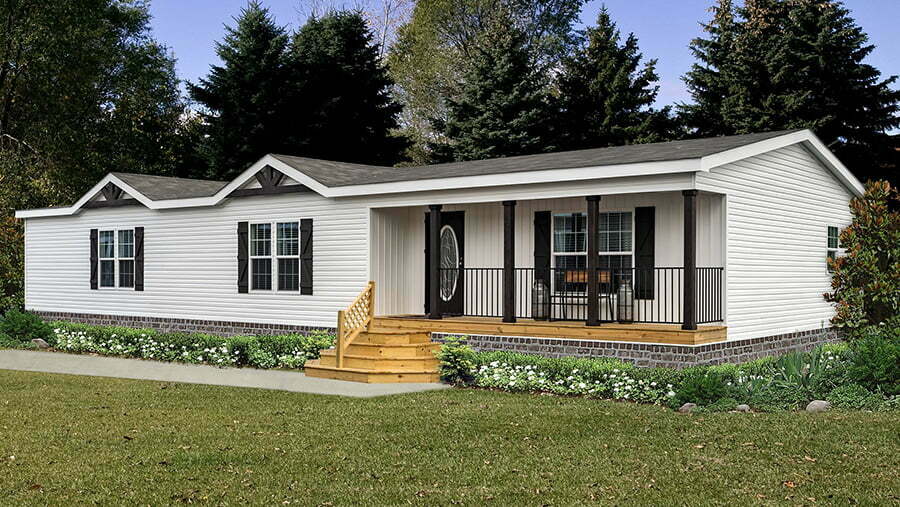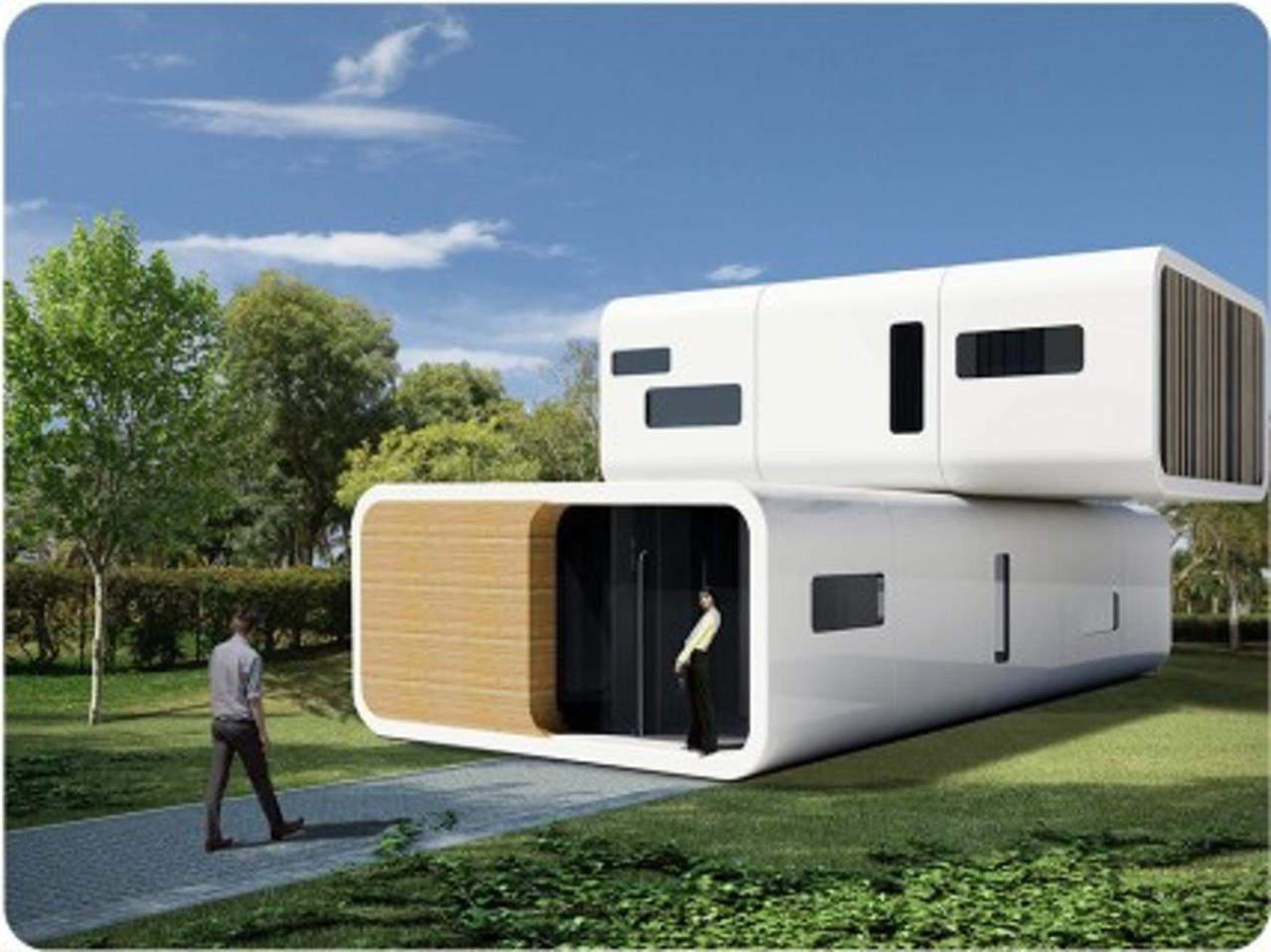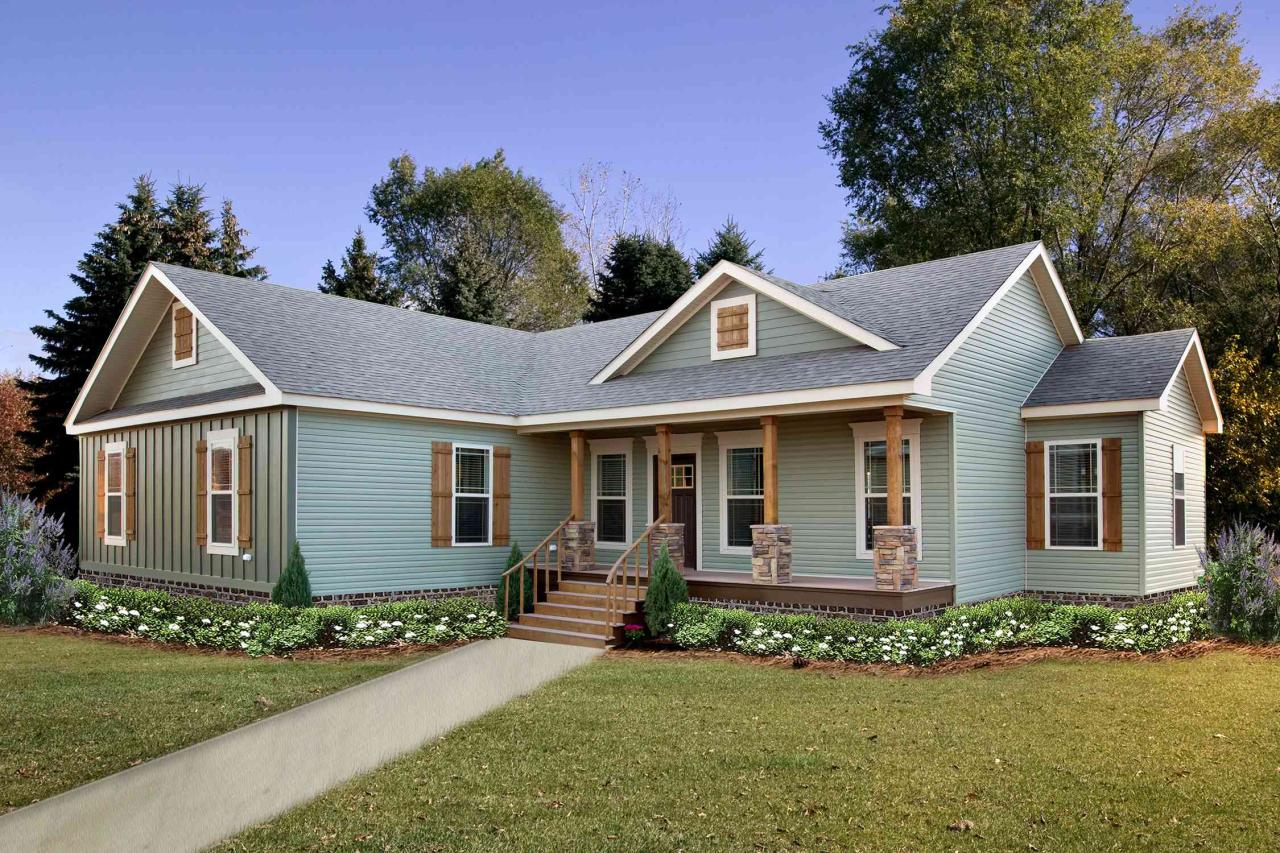Delving into Modular Homes: The Future of Affordable Living, this introduction immerses readers in a unique and compelling narrative. The topic explores the innovative concept of modular homes and their potential to revolutionize affordable living.
As we delve deeper into the intricacies of modular homes, we uncover the fascinating benefits they offer in terms of cost savings, environmental sustainability, and design flexibility.
Benefits of Modular Homes
Modular homes are a modern alternative to traditional stick-built homes, constructed off-site in sections or modules and then transported to the final location for assembly. This construction method differs from traditional homes where all building components are constructed on-site.
Cost Savings
Modular homes are known for their cost-effectiveness due to their efficient construction process. By building in a controlled environment, manufacturers can minimize waste, reduce construction time, and lower labor costs. Additionally, bulk purchasing of materials leads to savings that can be passed on to the homeowner.
Environmental Benefits
Compared to traditional construction methods, modular homes are more environmentally friendly. The controlled factory setting allows for precise material usage, reducing waste. Additionally, the efficiency of the construction process results in less energy consumption overall. This makes modular homes a sustainable choice for eco-conscious individuals looking to reduce their carbon footprint.
Design and Customization

When it comes to design and customization, modular homes offer a high level of flexibility that can cater to various preferences and needs. Unlike traditional construction, modular homes allow for a wide range of design options that can be tailored to individual tastes.
Design Flexibility
- Modular homes can be customized to fit any architectural style, from traditional to modern, and everything in between.
- Homeowners can choose from a variety of floor plans, layouts, and finishes to create a unique living space that suits their lifestyle.
- Modular homes can also be easily expanded or modified in the future, providing flexibility for changing needs and preferences.
Innovative Design Features
- Some modular homes incorporate eco-friendly features like solar panels, energy-efficient appliances, and sustainable materials to reduce environmental impact.
- Smart home technology can be integrated into modular homes, allowing for remote control of lighting, temperature, security systems, and more.
- Unique design elements such as vaulted ceilings, skylights, and built-in storage solutions can add character and functionality to modular homes.
Customization Comparison
- Compared to traditional construction, modular homes offer quicker turnaround times for design changes and upgrades, thanks to the prefabricated nature of the components.
- Modular homes also tend to have more predictable costs and timelines, as customization options are often included in the initial planning stages.
- With modular homes, homeowners have the flexibility to choose from a wide range of finishes, fixtures, and design details to create a personalized living space.
Construction Process

When it comes to constructing a modular home, the process is quite different from traditional stick-built homes. Modular homes are built in a factory setting, where each section of the home is constructed indoors in a controlled environment.
Step-by-step Process
- Design and Customization: The homeowner works with a modular home company to choose a floor plan and customize the home according to their preferences.
- Factory Construction: The various sections of the home are built in the factory, including the walls, floors, and ceilings.
- Transportation: Once the sections are completed, they are transported to the building site on trucks.
- Assembly: The sections are then assembled on the foundation at the site, and the finishing touches are added.
- Final Inspection: A final inspection is conducted to ensure that the home meets all quality standards and codes.
Time Frame
Building a modular home typically takes much less time compared to traditional construction. Since the majority of the home is constructed in a factory simultaneously while site work like foundation preparation is being done, the overall construction time is significantly reduced
Modular homes can be built in a matter of weeks, whereas traditional homes can take several months to complete.
Quality Control Measures
Quality control is a top priority in the construction of modular homes. Since the homes are built indoors in a factory, they are not exposed to the elements like traditional construction, which can lead to weather-related damage or delays. Additionally, each module goes through rigorous quality checks throughout the construction process to ensure that it meets all building codes and standards.
Affordability and Accessibility

Modular homes offer a cost-effective solution for individuals across various income brackets, making homeownership a reality for many who might not have considered it otherwise.
Factors Contributing to Affordability
- Cost-Effective Construction: Modular homes are built in a factory setting, which streamlines the construction process and reduces labor costs.
- Economies of Scale: Mass production of modular components allows for bulk purchasing of materials, driving down overall costs.
- Reduced Construction Time: The assembly line process of modular homes significantly decreases the time needed for construction, saving money on labor and overhead.
- Energy Efficiency: Many modular homes are designed with energy-efficient features, lowering utility bills and long-term expenses for homeowners.
Making Homeownership Accessible
- Flexible Financing Options: Modular homes are often more affordable than traditional stick-built homes, allowing for easier financing and lower monthly payments.
- Customization within Budget: Homebuyers can choose from a variety of floor plans and design options to fit their needs and budget, ensuring affordability without sacrificing personalization.
- Location Versatility: Modular homes can be placed in a variety of settings, including rural areas or land with limited access to traditional construction, expanding homeownership opportunities.
- Resale Value: Modular homes retain their value over time, providing a solid investment for homeowners looking to build equity and financial stability.
Technology and Innovation
Technology plays a crucial role in the advancement of modular home construction, revolutionizing the way these homes are designed, built, and customized. Innovation continues to shape the future of modular homes, pushing boundaries and introducing cutting-edge solutions to enhance quality, efficiency, and sustainability.
Integration of Smart Home Technologies
One of the key areas where technology is making a significant impact on modular homes is the integration of smart home technologies. These technologies allow homeowners to control various aspects of their homes remotely, from lighting and temperature to security systems and appliances.
By incorporating smart home features into modular designs, homeowners can enjoy a more convenient and efficient living experience.
3D Printing and Prefabrication
3D printing is another innovative technology that is being increasingly used in modular home construction. This technology allows for the rapid production of complex components with precision and efficiency, reducing construction time and costs. Prefabrication processes are also being enhanced through the use of robotic automation, ensuring consistency and quality in the assembly of modular homes.
Sustainable Building Materials
Advancements in technology have led to the development of sustainable building materials that are not only eco-friendly but also durable and cost-effective. From recycled materials to energy-efficient systems, modular homes are incorporating these innovations to reduce their environmental impact and improve energy efficiency.
This focus on sustainability aligns with the growing demand for eco-conscious living spaces.
End of Discussion
In conclusion, Modular Homes: The Future of Affordable Living presents a promising outlook for the future of housing. With their affordability, sustainability, and innovative design options, modular homes are indeed paving the way for a more accessible and efficient living solution for many individuals.
Question Bank
Are modular homes more affordable than traditional homes?
Yes, modular homes generally offer cost savings due to their efficient construction process.
What design flexibility do modular homes offer?
Modular homes allow for a wide range of customization options to suit the homeowner's preferences.
How long does it take to build a modular home?
The construction time frame for a modular home is typically shorter compared to traditional construction methods.
Do modular homes contribute to environmental sustainability?
Yes, modular homes are known for their eco-friendly construction practices and materials.








